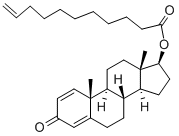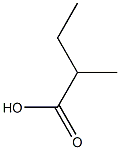Sorbic acid , 99.8% , 110-44-1
Synonym(s):
Sorbic acid;α-trans-γ-trans-Sorbic acid;(E,E)-1,3-Pentadiene-1-carboxylic acid;trans,trans-2,4-Hexadienoic acid;2,4-Hexadienic acid
CAS NO.:110-44-1
Empirical Formula: C6H8O2
Molecular Weight: 112.13
MDL number: MFCD00002703
EINECS: 203-768-7
| Pack Size | Price | Stock | Quantity |
| 100G | RMB44.00 | In Stock |
|
| 500G | RMB129.60 | In Stock |
|
| others | Enquire |
PRODUCT Properties
| Melting point: | 132-135 °C (lit.) |
| Boiling point: | 228°C |
| Density | 1.2 g/cm3 at 20 °C |
| vapor pressure | 0.01 mm Hg ( 20 °C) |
| refractive index | 1.4600 (estimate) |
| FEMA | 3921 | 2,4-HEXADIENOIC ACID, (E,E)- |
| Flash point: | 127 °C |
| storage temp. | 2-8°C |
| solubility | ethanol: 0.1 g/mL, clear |
| form | Crystalline Powder |
| pka | 4.76(at 25℃) |
| color | White or cream-white |
| Odor | bland |
| PH | 3.3 (1.6g/l, H2O, 20°C) |
| biological source | synthetic |
| Water Solubility | 1.6 g/L (20 ºC) |
| Merck | 14,8721 |
| JECFA Number | 1176 |
| BRN | 1741831 |
| Stability: | Material saturated with this acid may ignite spontaneously. Incompatible with strong oxidizing agents. May be light sensitive. |
| InChIKey | WSWCOQWTEOXDQX-MQQKCMAXSA-N |
| LogP | 1.32 at 20℃ |
| CAS DataBase Reference | 110-44-1(CAS DataBase Reference) |
| NIST Chemistry Reference | 2,4-Hexadienoic acid, (E,E)-(110-44-1) |
| EPA Substance Registry System | Sorbic acid (110-44-1) |
Description and Uses
Sorbic acid, also known as herbal tea acid, 2,4-hexadienoic acid, 2-propenyl acrylic acid, with molecular formula C6H8O2, is a food additive that has inhibitory effects on many fungi such as yeast and mold. It is also used in animal feed, cosmetics, pharmaceuticals, packaging materials and rubber additives.
Sorbic Acid is a preservative that is effective against yeasts and molds. it is effective over a broad ph range up to ph 6.5, being ineffective above ph 7.0. it is a white, free-flowing powder which is slightly soluble in water with a solubility of 0.16 g in 100 ml of water at 20°c. its solubility in water increases with increasing temperatures, although it is not recommended in foods that are pasteurized because it breaks down at high temperatures. the salts are potas- sium, calcium, and sodium sorbate. it is used in cheese, jelly, bever- ages, syrup, and pickles. typical usage levels range from 0.05 to 0.10%.
Safety
| Symbol(GHS) |  GHS07 |
| Signal word | Warning |
| Hazard statements | H315-H319 |
| Precautionary statements | P264-P280-P302+P352-P305+P351+P338-P332+P313-P337+P313 |
| Hazard Codes | Xi |
| Risk Statements | 36/37/38-36/38 |
| Safety Statements | 26-36-24/25 |
| WGK Germany | 1 |
| RTECS | WG2100000 |
| F | 8 |
| Autoignition Temperature | >130 °C |
| TSCA | Yes |
| HS Code | 29161930 |
| Hazardous Substances Data | 110-44-1(Hazardous Substances Data) |
| Toxicity | LD50 orally in rats: 7.36 g/kg (Smyth, Carpenter) |




